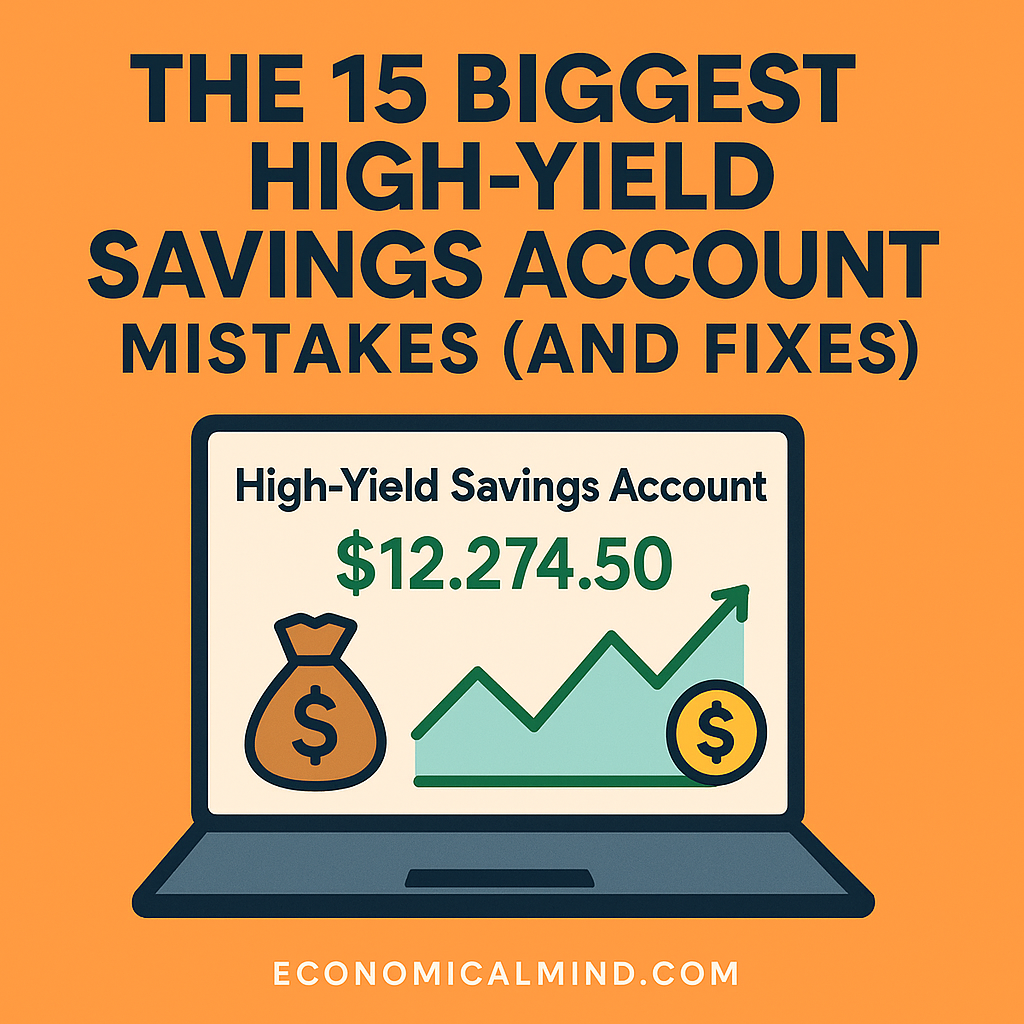
High-yield savings accounts are one of the simplest ways to make your money work harder — but small mistakes can quietly eat away at your returns. Whether you’re just opening your first account or managing multiple ones, understanding these common missteps can save you time, frustration, and lost interest.
1. Ignoring Minimum Balance Requirements
Many accounts require a certain balance to earn the advertised APY. Dropping below that can cut your rate in half (or more).
Fix: Always check the fine print and keep a small buffer to stay above the minimum.
2. Chasing Rates Too Often
It’s tempting to jump to a new bank every time you see a slightly higher rate. Constantly switching, however, can lead to lost days of interest and confusion.
Fix: Stick with one or two reputable banks and review rates quarterly instead of monthly.
3. Forgetting About FDIC or NCUA Insurance
Not every “high-yield” account is protected. Without FDIC or NCUA insurance, your money isn’t federally guaranteed.
Fix: Only deposit funds in accounts clearly marked FDIC (banks) or NCUA (credit unions) insured.
4. Keeping All Savings in One Bank
Banks occasionally lower rates or introduce hidden fees. Relying on a single institution can limit your flexibility.
Fix: Diversify — use one high-yield account for your emergency fund and another for short-term goals.
5. Not Linking to a Checking Account
Without a linked checking account, transferring money in or out can take longer and become a hassle.
Fix: Connect your main checking account for easy, fast transfers.
6. Falling for Promotional Rates
Many banks offer a teaser rate that drops after a few months.
Fix: Check how long the “intro rate” lasts and what the standard rate will be afterward.
7. Forgetting to Move Idle Cash
Leaving money in a regular savings or checking account means losing out on easy interest.
Fix: Automate monthly transfers from checking into your high-yield savings.
8. Not Setting Up Automatic Transfers
If saving depends on manual effort, it won’t happen consistently.
Fix: Automate deposits so your balance (and interest) grow passively.
9. Overlooking Withdrawal Limits
Some high-yield accounts limit monthly transfers. Exceeding that can trigger penalties or rate reductions.
Fix: Keep frequent-use funds in checking, and use savings for longer-term storage.
10. Using It Like a Checking Account
High-yield savings are not designed for everyday spending. Constant transactions can disrupt compounding and raise red flags.
Fix: Treat it as a long-term parking spot, not a spending account.
11. Ignoring Compounding Frequency
Daily compounding earns slightly more than monthly compounding — over time, that difference adds up.
Fix: Compare APYs and compounding schedules before opening an account.
12. Forgetting to Reinvest Interest
Some people withdraw their interest each month, slowing growth.
Fix: Let your interest compound for maximum returns.
13. Leaving Money in Low-Rate Legacy Accounts
Older accounts may pay near-zero interest even at the same bank.
Fix: Ask your bank to upgrade your account type or transfer funds to their current high-yield option.
14. Ignoring Taxes on Interest Earned
Interest is taxable income. Many savers forget to account for it until tax season.
Fix: Track your interest statements and factor it into your annual filing.
15. Not Reviewing Accounts Annually
Rates, rules, and your goals all change. Sticking with the same setup forever may cost you.
Fix: Review your savings accounts every 12 months to ensure you’re still getting the best value.
Key Takeaway
High-yield savings accounts are one of the easiest tools for building financial momentum — but only if you use them wisely. Avoiding these 15 mistakes can help you keep your savings growing smoothly and stress-free.
